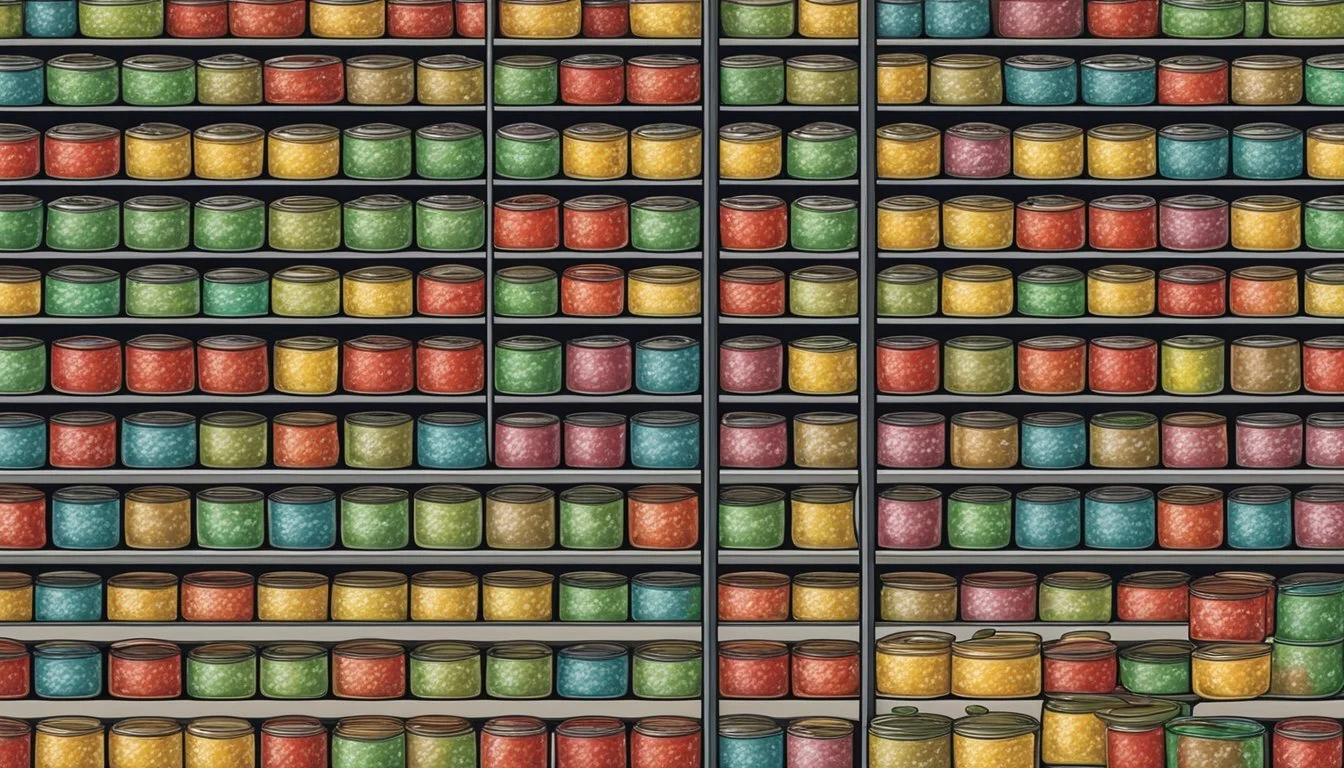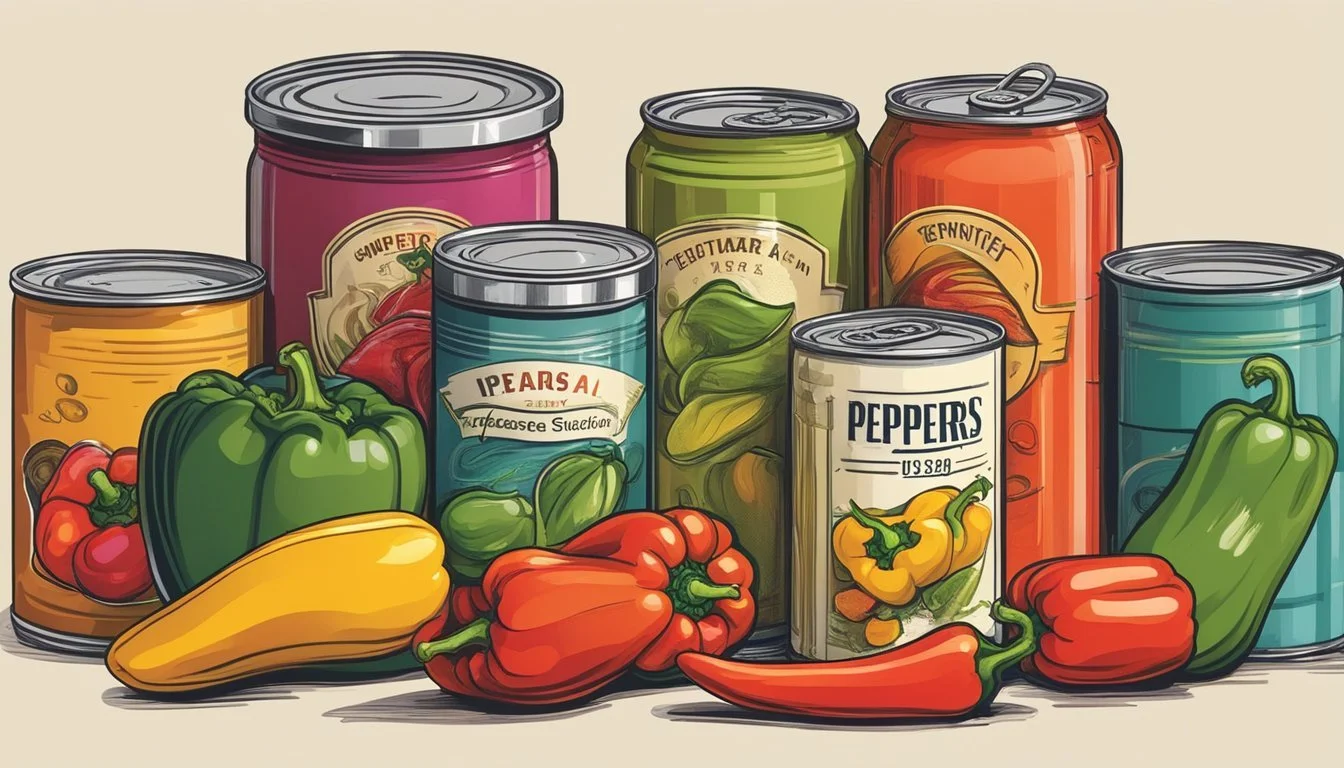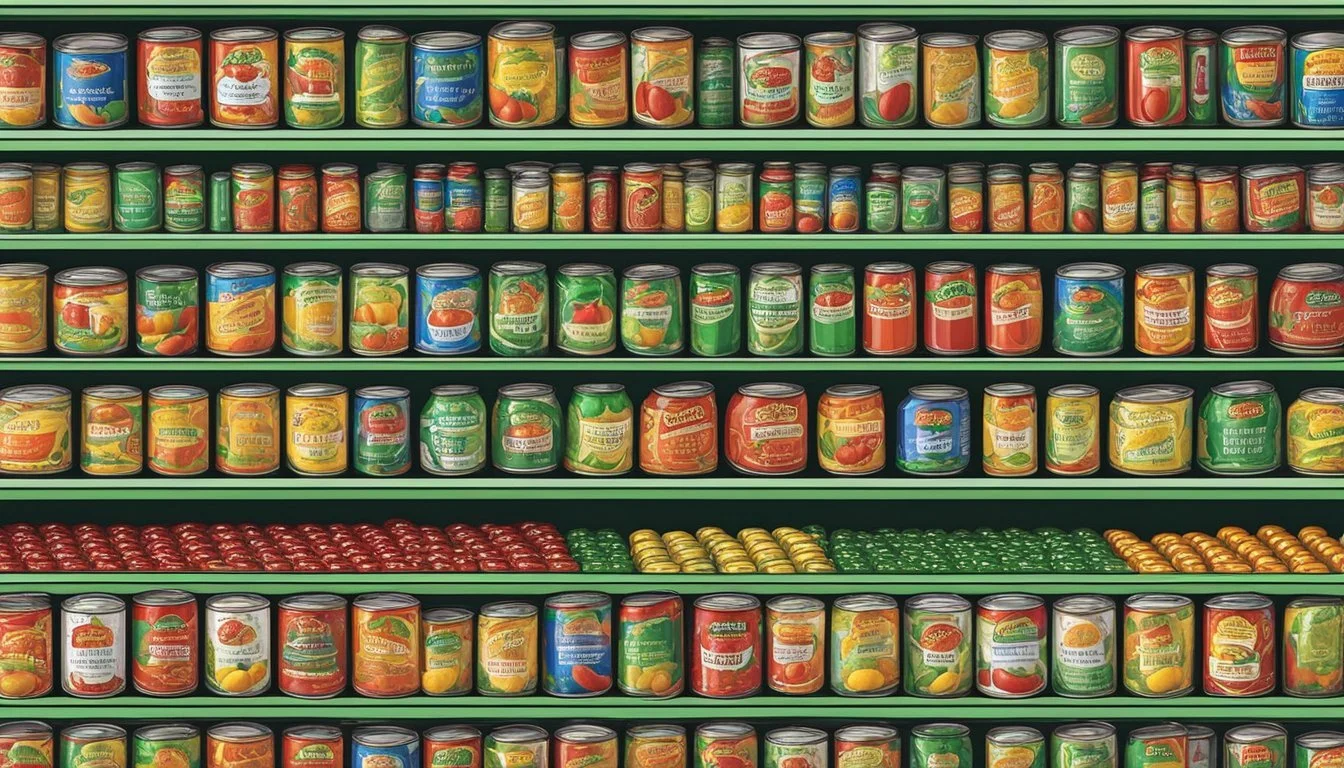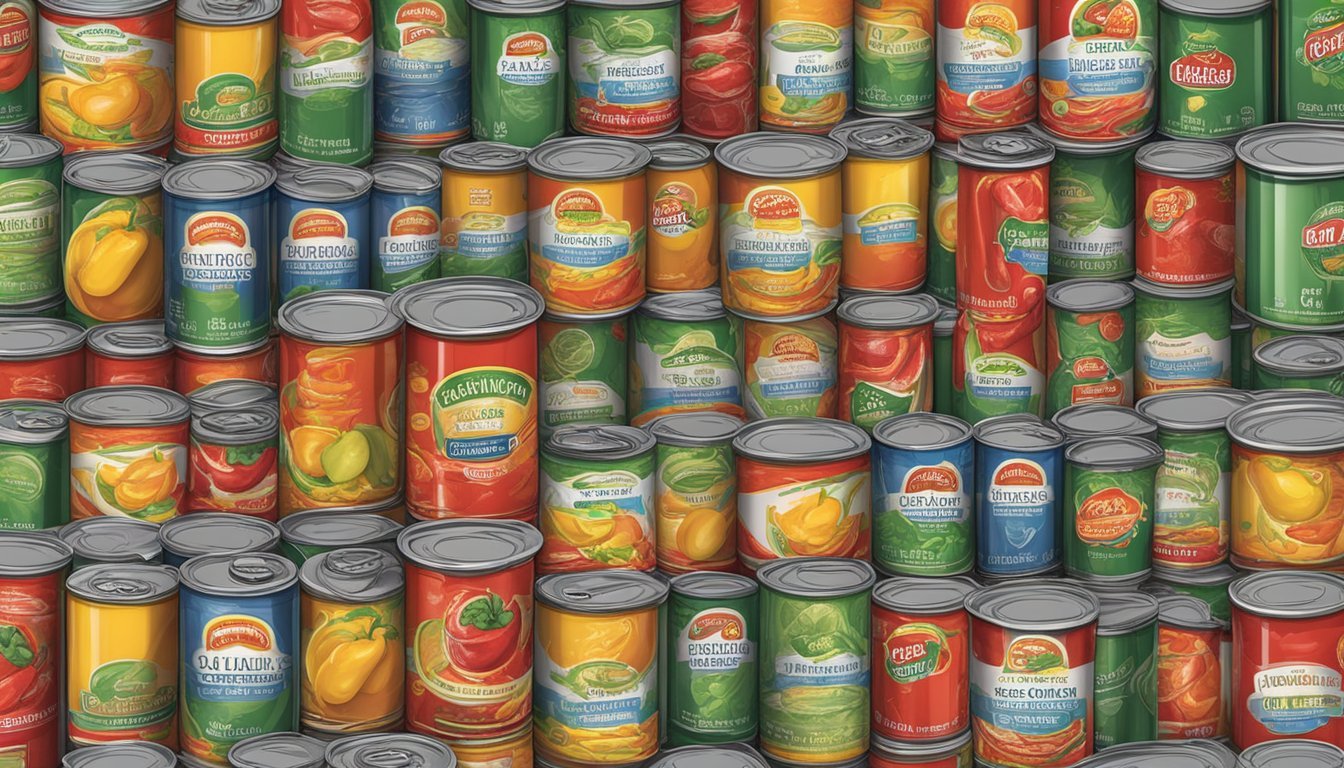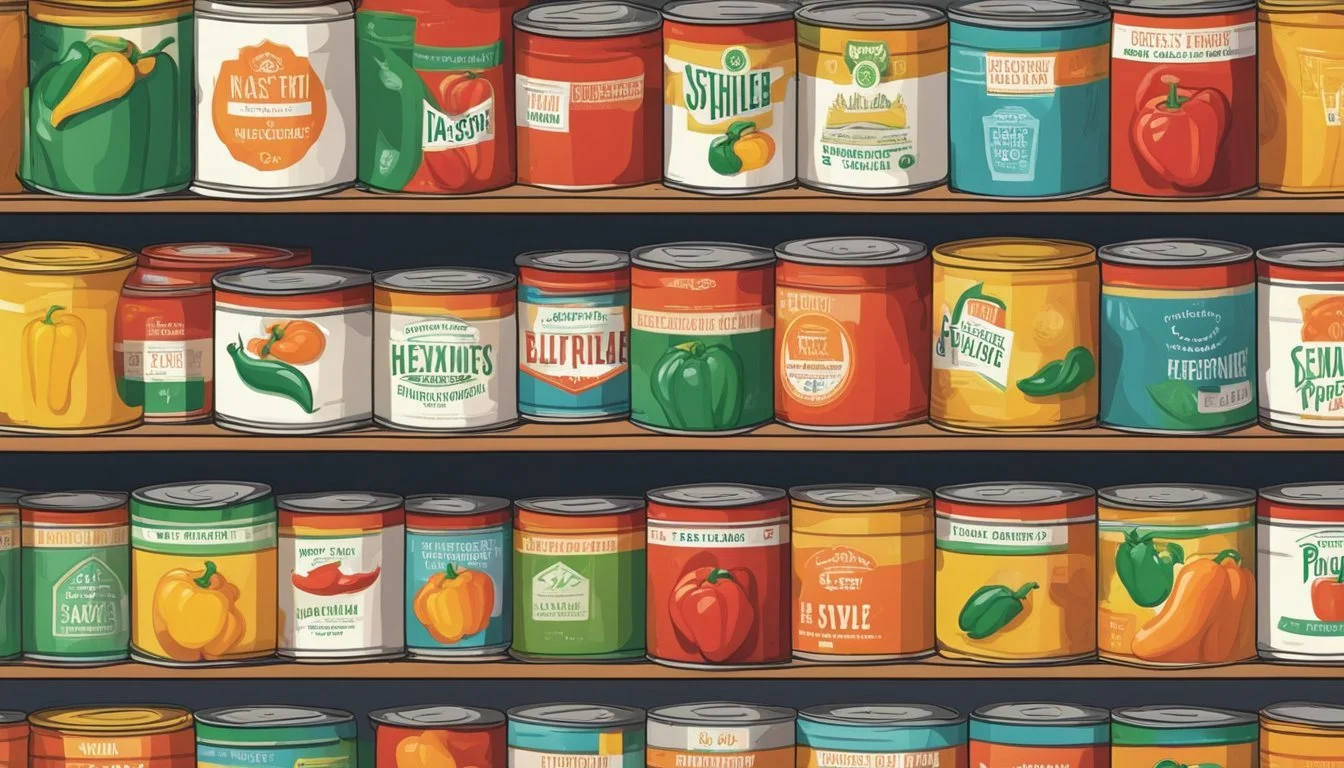Do Canned Peppers Expire?
Understanding Shelf Life and Safety
Canned peppers are a staple in many kitchens due to their convenience and long shelf life, but the question remains: do they expire? While the "expiration" date on the can is important, properly stored, unopened canned peppers can generally maintain their best quality for about 3 to 5 years, although they often remain safe to use beyond that period. Key factors such as exposure to extreme temperatures or physical damage to the can can affect their longevity.
Once opened, the scenario changes significantly. Opened canned peppers should typically be consumed within 2 to 3 weeks to maintain their quality and safety. This shortened shelf life is due to the exposure to air and potential contamination once the seal is broken. Proper storage in the refrigerator can help extend their usability within this timeframe.
Knowing how to handle and store canned peppers can greatly impact their longevity and safety. Keeping an eye on the integrity of the can and paying attention to the storage conditions are crucial practices. By understanding these factors, one can make the most out of their canned goods, ensuring both quality and safety for consumption.
Understanding Canned Peppers
Canned peppers are preserved to stay fresh for extended periods. This section will focus on shelf life, the importance of expiration dates, and the canning process.
Defining Shelf Life
The shelf life of canned peppers, including jalapeno peppers, typically ranges from one to five years. The duration depends on factors like the canning method and storage conditions. Proper storage involves keeping cans in a cool, dark place. Extreme temperatures can affect the quality.
Factors that influence shelf life:
Temperature: Store at room temperature for best results.
Preservatives: Ingredients like vinegar may extend shelf life.
Condition of the can: Dents or rust can shorten shelf life.
Importance of Expiration Dates
Expiration dates are not just arbitrary numbers on a can. They indicate when the product is at its peak quality. After this date, the peppers might lose flavor or texture.
Why expiration dates matter:
Safety: Consuming expired peppers can lead to food poisoning.
Quality: Taste and texture degrade over time.
Regulation: Ensures compliance with food safety standards.
Checking the expiration date before purchase and use is crucial. Discard any cans that are past their expiration.
Canning Process Overview
The canning method is pivotal in determining the longevity of canned peppers. It typically involves pickling in vinegar and sealing the containers to create an anaerobic environment, preventing bacterial growth.
Steps in the canning process:
Cleaning and chopping the peppers.
Pickling: Peppers are often stored in vinegar.
Sealing: Ensuring an airtight seal to block contaminants.
Sterilization: Heating cans to kill bacteria.
The addition of preservatives like vinegar plays a significant role in maintaining the peppers' edibility over time. Proper canning ensures a long shelf life and safe consumption.
By understanding these factors, consumers can better manage their food storage and ensure the safe usage of canned peppers.
Factors Influencing Expiration
The longevity of canned peppers depends largely on storage conditions, exposure to air, and the materials used in packaging. Each of these aspects plays a crucial role in determining the shelf life.
Storage Conditions Effect
Canned peppers should ideally be stored in a cool, dry place. Extreme temperatures can accelerate spoilage. Room temperature storage is typically sufficient, but refrigeration isn't necessary for unopened cans.
Humidity can also affect the shelf life. Moisture can lead to rust and damage the can. A dry storage environment is essential to maintain the integrity of both the packaging and contents.
Proper storage conditions significantly extend the shelf life of the product, sometimes by several years.
Impact of Air Exposure
Air exposure primarily affects canned peppers once the can is opened. Once exposed to air, microorganisms can enter, leading to faster spoilage. It's crucial to refrigerate opened cans to slow down this process.
The presence of air can also cause oxidation, which compromises the flavor and safety of the peppers. Airtight containers should be used to store any unused portion after opening, reducing the risk of contamination.
Ensuring minimal air exposure is key to preserving the quality of opened canned peppers.
Role of Packaging Materials
The materials used in packaging play a significant role in the longevity of canned peppers. Metal cans are commonly used as they are durable and provide an airtight seal. However, any physical damage to the can, such as dents or rust, can lead to contamination.
Some manufacturers use BPA-free or lined cans to prevent chemical leaching. The quality of the seal also impacts shelf life. A hermetic seal ensures that no air or moisture penetrates the can, preserving the contents.
High-quality packaging materials can substantially increase the shelf life of canned peppers, keeping them safe and flavorful for extended periods.
Identifying Spoilage Signs
To ensure the safety and quality of canned peppers, it's essential to recognize the signs of spoilage. This includes examining visual indicators, changes in texture and flavor, and the integrity of the container.
Visual Spoilage Indicators
Visual cues are often the first sign that canned peppers may have gone bad. Look for discoloration; fresh peppers should retain their vibrant color, while spoiled ones may appear dull or brown. Mold growth is another critical sign, appearing as fuzzy spots on the peppers. Additionally, notice any cloudiness in the liquid inside the can, which should typically be clear. Bulging or severely dented cans can also indicate contamination and should not be consumed.
Texture and Flavor Changes
Texture and flavor changes often accompany spoilage. Spoiled peppers may become mushy or slimy rather than having their normal, firm texture. When tasting, a sour or bitter flavor instead of the typical taste of roasted peppers is a strong indicator of decay. While taste testing should be done cautiously, any noticeable off-putting flavor should immediately signal that the peppers are no longer safe to eat.
Container Integrity Red Flags
The condition of the container itself can provide critical hints about the peppers' state. Pay attention to bulging lids or sides, which can be due to internal pressure from gas produced by bacterial growth. Rust around the seams can also compromise the seal, potentially allowing bacteria to enter. Leaking cans are a major red flag and indicate spoilage. Small pinholes or damages in the container can go unnoticed but can also be a source of contamination. Always ensure the cans are stored properly to maintain their integrity and keep the contents safe.
Safety and Health Considerations
When dealing with canned peppers, it is crucial to consider safety and health factors like preventing food poisoning and understanding the risks of botulism. These steps ensure the consumption of safe products and avoid severe health issues.
Preventing Food Poisoning
Canned peppers should always be checked for expiration dates and signs of spoilage. Swollen or leaking cans indicate potential contamination. Proper storage is essential; keep cans in a cool, dry place and avoid extreme temperatures.
Before using, examine the can's integrity. Rust or dents can compromise seals, leading to contamination. Always smell the contents once opened; a sour or off odor signals spoilage. Discard if in doubt to prevent food poisoning.
Understanding Botulism Risks
Botulism, caused by Clostridium botulinum, poses a significant risk with improperly canned foods. This bacterium can thrive in low-acid foods like peppers if not sealed or processed correctly. Symptoms include blurred vision, muscle weakness, and can be life-threatening.
To minimize risk, ensure cans are hermetically sealed and undamaged. When home-canning, follow sterilization methods rigorously. Heating canned peppers to a high temperature before consumption can destroy any botulinum toxin present.
Always remain vigilant and cautious to guard against this serious illness. Taking these preventive measures significantly reduces the chance of botulism from canned peppers.
Proper Storage Practices
Proper storage practices are crucial for maintaining the quality and safety of canned peppers. Whether the cans are opened or unopened, correct handling can significantly extend their shelf life.
Extending Shelf Life After Opening
Once opened, canned peppers should be transferred to an airtight container to prevent exposure to air and contaminants. Glass or plastic containers with tight-fitting lids are ideal.
Refrigerate the opened peppers immediately. They typically last for up to 7 to 10 days in the fridge.
Freezing can be an option for longer storage. Place the peppers in a freezer-safe container or bag, removing as much air as possible. They can be stored for 2 to 3 months in the freezer, but this might affect their texture.
Best Practices for Unopened Cans
Unopened cans of peppers should be stored in a cool, dry place away from direct sunlight. A pantry or a cupboard is suitable. The temperature should ideally be below 75°F (24°C) to prevent deterioration.
Always check the "best by" date before use. While canned peppers typically last between 2 to 5 years, the actual shelf life can vary based on the manufacturer and packaging.
Avoid storing cans in areas with high humidity to prevent rusting. Damaged or bulging cans should be discarded, as these are signs of potential spoilage.
Utilization of Canned Peppers
Canned peppers are versatile ingredients that can greatly enhance various dishes. They offer convenience and a longer shelf life compared to fresh peppers, making them a valuable pantry staple.
Incorporating into Recipes
Canned peppers can be added to a variety of recipes to introduce vibrant flavors and spices. They are excellent in soups and stews, providing a depth of flavor that develops during cooking. Adding these peppers to pizzas, pastas, and sandwiches can elevate the taste with minimal effort.
These peppers are also ideal for tacos and burritos. They blend well with other ingredients like beans and meat. Additionally, they can be used in dips and spreads for festive gatherings. When reheating frozen meals, canned peppers retain their texture and taste.
Fresh vs. Canned Comparison
Fresh peppers offer a crisp texture and a natural, raw flavor that is difficult to replicate. They are important in dishes that require a fresh, crunchy element like salads. On the other hand, canned peppers are already cooked and preserved, making them convenient for quick meals.
In terms of preservation, canned peppers last much longer. Fresh peppers need to be used within a week unless frozen. The canning process often includes additional spices and oils, enhancing the peppers. Both have their place in the kitchen, each bringing unique attributes to a dish.
Maximizing Nutritional Value
Maximizing the nutritional value of canned peppers involves understanding how the canning process affects their nutrient content and using best practices to preserve these nutrients. Specific steps and considerations can help retain the maximum benefit from canned vegetables.
Nutrient Preservation in Canned Foods
The canning process generally helps retain the nutritional value of peppers, but certain nutrients may degrade over time or due to exposure to air. Vitamins like A and C are sensitive to heat and light, which can reduce their levels during processing.
To minimize nutrient loss, store opened cans in airtight containers in the refrigerator. This reduces oxidation and bacterial growth. Canned foods like tomatoes and green beans also benefit from proper storage methods, ensuring they retain their beneficial nutrients.
Incorporating canned vegetables into meals that include other fresh or lightly cooked produce can further enhance overall nutrient intake. Using canning liquids in recipes can also capture dissolved nutrients, preventing them from being wasted.
Consumer Guidance
Proper understanding of labels and the storage information provided on canned goods is crucial for maintaining food safety and quality.
Reading and Understanding Labels
When purchasing or using canned peppers, examine the labels closely. Look for terms like "best if used by", "use-by", "best before", and "best when used by". These dates indicate the period during which the product is expected to remain at its best quality.
Storage Information: Labels often include advice on how to store the cans to maximize shelf life. Generally, canned foods should be kept in a cool, dry place. Avoid exposing cans to extreme temperatures.
Expiration Date: Always check this date to ensure the product has not passed its safe consumption period. Consuming expired canned peppers can pose health risks, including food poisoning.


